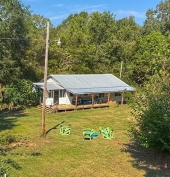
 5
5




 5
5






Idle dreamer
 2
2




 4
4




Visit Redhawk's soil series: https://permies.com/wiki/redhawk-soil
How permies.com works: https://permies.com/wiki/34193/permies-works-links-threads
 3
3




 2
2




Visit Redhawk's soil series: https://permies.com/wiki/redhawk-soil
How permies.com works: https://permies.com/wiki/34193/permies-works-links-threads
 1
1








Idle dreamer




I saw a Youtube about someone using a Fresnel lens on a sunny day to melt glass bottles. I wonder if they could actually be melted and pressed flat enough to be set into the ground to make paths? I'd also wonder if they'd be slippery? You'd have to collect a *lot* of bottles to make enough path to be useful, but maybe in the most visible locations it would be a good use of glass.Jay mentioned glass, and I want to shout out to one of my favorite businesses in Seattle - https://bedrockindustries.com/ - who do gorgeous recycled glass tiles and tumbled glass chips for paths.
Visit Redhawk's soil series: https://permies.com/wiki/redhawk-soil
How permies.com works: https://permies.com/wiki/34193/permies-works-links-threads






|
When all four tires fall off your canoe, how many tiny ads does it take to build a doghouse?
The new kickstarter is now live!
https://www.kickstarter.com/projects/paulwheaton/garden-cards
|






